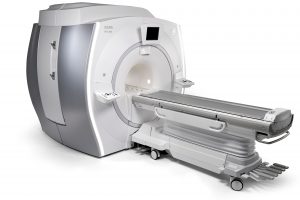
The SIGNA PET MR from GE Healthcare is one of the many systems that will be updated to HELiOS in the coming 2 years. Image Image: GE Healthcare
What does running large particle accelerators have in common with hospital imaging scanners? The operating system for both requires high performance and stability.
Fermilab first developed Scientific Linux as an open-source operating system in 2004 to fulfill exactly these demands, and it continues to release new versions.
GE Healthcare, a company that builds medical imaging equipment, found that it had the same needs when it came to operating systems. It now employs Scientific Linux as a foundation for its own, customized HELiOS, which stands for Healthcare Enterprise Linux Operating System.
According to GE, more than 30,000 medical imaging machines worldwide use this SL-based operating system to search for broken bones, tumors and other injuries on organs, and their numbers will easily double in the next two years. On GE machines, HELiOS manages the whole process, from taking an image of a patient to reconstructing the image and even displaying it for doctors.
At Fermilab, Scientific Linux runs on all computers for particle accelerator operation and on most data taking systems for experiments. Many scientists use it every day to write simulations or perform data analysis.
“Originally we created Scientific Linux for the high-energy physics community, but it was never exclusively for them. Everybody can download and use it,” said Connie Sieh, Fermilab computer specialist and co-developer of Scientific Linux. “We were really surprised when GE contacted us. We had never expected that our SL would spread that far or that it would be used in medicine.”
GE initiated the contact with Fermilab about the software, discussing customization issues. From there, the two institutions began a regular, informal exchange of knowledge and ideas to improve both operating systems.

Fermilab uses Scientific Linux to control and monitor all accelerators on site from the main accelerator operations room. Photo credit: Reidar Hahn
“Now we talk and meet on a regular basis, which is great, and Fermilab assistance is very welcome,” said James Foris, senior system engineer at GE Healthcare. “This exchange really reflects the open-source mentality we all share in software development.”
Fermilab develops Scientific Linux in the same way most Linux distributions are developed: The source code is freely available and can be changed or customized. Fermilab’s computing experts continually customize the Red Hat Linux distribution to provide a stable, scalable and extensible operating system to support the needs of the scientific community. GE then leverages Fermilab’s Scientific Linux to create HELiOS, a Linux distribution for healthcare applications.
“We use this style of software development for our products to ensure that our customers get a stable system tailored to their needs,” Foris said. “And avoiding the extra costs for software licenses always helps.”
One other attractive feature of Scientific Linux is its long lifespan: A single SL version, such as SL version 7, is supported by updates for 10 years. (A quick lesson in new versions versus new updates: Installing a new version, say version 7, is like buying a new car, while updating a version, say from version 7 to 7.1, is like getting an oil change or new tires. An update includes some new features, but never a major change in the whole design of the software. Major changes are released as new versions, such as SL version 8.)
For GE, this long lifespan means that they can support the software of their magnetic resonance imagers and other systems for 10 years, providing publicly reviewed and available bug fixes and security updates, without making major changes, which can be inconvenient for their customers.
Fermilab’s computing experts increase the security of the operating system to fulfill the standards of usage at a Department of Energy national laboratory. They implement features for easy access to file sharing and data storage, which are crucial for high-performance computing. GE uses those computing features for their own image reconstruction.
Scientific Linux was created for running accelerators and calculating particle collisions, and now its use has extended to our everyday lives, assisting people worldwide with their health and well-being.
The Scientific Linux team wishes to thank Red Hat for its contributions to maintaining an open, free, collaborative, and transparent open source community for software development.



